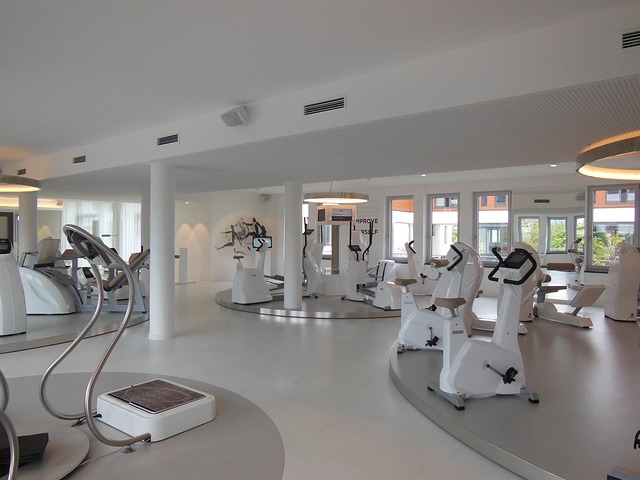When most people think of physical fitness, the first images that come to mind are strength training, cardiovascular endurance, or high‑intensity interval workouts. Yet a subtle yet powerful component that often remains underappreciated is flexibility. Flexibility is the ability of a joint or series of joints to move through an unrestricted range of motion. It is a foundational element that supports overall movement efficiency, reduces injury risk, and creates a seamless bridge between the mind, body, and nutritional habits that define a healthy lifestyle.
The Science Behind Flexibility and Health
Scientific research shows that well‑maintained flexibility contributes to improved circulation, enhanced lymphatic flow, and efficient hormonal signaling. When muscles and tendons can glide smoothly, the body experiences less mechanical stress, allowing energy to be directed toward nourishment, sleep, and daily activities. In addition, flexible joints tend to preserve cartilage integrity, reducing the long‑term risk of osteoarthritis. From a nutritional perspective, adequate hydration and balanced electrolytes are essential for optimal muscle elasticity, highlighting a clear link between what we eat and how supple our bodies feel.
- Increased blood flow to working muscles
- Lowered systemic inflammation
- Improved posture and biomechanics
- Better sleep quality and recovery
Flexibility as a Daily Habit
Integrating simple stretching routines into everyday life can amplify the benefits of a balanced diet. A routine does not require elaborate gear or gym membership; a quiet 10‑minute stretch after waking or before bed can reset posture, clear mental fog, and prime the body for nutrient absorption. Even office workers can benefit by taking short breaks to roll shoulders, flex wrists, and perform gentle neck rotations, counteracting the stiffness that often accompanies prolonged sitting.
“Movement is a medicine for all sorts of problems in the body,” says Dr. Maya Lee, a physiotherapist who emphasizes the importance of regular mobility work in preventing chronic pain.
Nutrition and Flexibility: A Two‑Way Street
The relationship between diet and joint flexibility is bidirectional. Consuming foods rich in omega‑3 fatty acids, antioxidants, and essential vitamins can improve tissue health and elasticity. Omega‑3s, found in fatty fish and flaxseed, reduce inflammation that can stiffen connective tissue. Antioxidants from colorful fruits and vegetables mitigate oxidative stress, preserving collagen structure. Adequate protein supplies amino acids needed for muscle repair and maintenance, while vitamin C and zinc are critical for collagen synthesis. Conversely, a flexible body is better equipped to process and absorb nutrients efficiently, creating a positive feedback loop that sustains a healthy lifestyle.
- Omega‑3 rich foods: salmon, sardines, walnuts, chia seeds
- Vitamin‑C heavy produce: oranges, kiwi, bell peppers, strawberries
- Protein sources: lean meats, legumes, tofu, Greek yogurt
- Hydration: aim for 8–10 cups of water daily, especially before stretching sessions
Morning Mobility Rituals
A gentle wake‑up routine can set a tone of openness and readiness for the day. Start with a slow, deep inhalation while raising arms above the head, then exhale as you release the tension into a forward fold. Follow with a seated spinal twist to activate core flexibility, then a gentle quadriceps stretch on each leg. Finish with a brief calf stretch against a wall. This sequence encourages blood flow to the lower body, loosens the spine, and primes the digestive system for nutrient uptake later in the day.
“When the body feels unburdened, the mind follows suit,” explains nutritionist Lena Martinez, who has seen patients report higher energy levels after incorporating mobility practices into their morning routine.
Flexibility in the Context of Exercise Programming
Many workout programs focus on hypertrophy or cardiovascular metrics, inadvertently neglecting flexibility. However, balanced training that integrates dynamic warm‑ups, static cool‑downs, and periodic mobility work produces more sustainable results. A typical week might include two strength sessions, two cardio sessions, and one dedicated flexibility session. During strength workouts, perform dynamic stretches—leg swings, arm circles, hip circles—to warm up joint ranges. After cardio, slow down with static holds: hamstring stretch, butterfly stretch, and shoulder opener. This layered approach reduces muscle soreness, preserves joint health, and keeps the body adaptable to new challenges.
Case Study: The 50‑Year‑Old Runner
John, a 52‑year‑old recreational runner, noticed knee pain after his fifth marathon. After consulting a sports physician, he was advised to incorporate flexibility drills targeting the quadriceps, hamstrings, and hip flexors. Within three weeks, his pain resolved, and his running economy improved by 4%. John’s diet also shifted toward higher magnesium intake through leafy greens and nuts, supporting muscle relaxation and joint lubrication. This holistic approach exemplifies how flexibility and nutrition intertwine to maintain performance.
Mind‑Body Connection: Flexibility Meets Mental Wellness
Flexibility exercises often involve focused breathing and mindful movement, which can lower cortisol levels and improve mental clarity. The slow, deliberate motions promote present‑moment awareness, reducing stress that can interfere with digestion and nutrient absorption. For individuals with high‑pressure jobs or chronic anxiety, incorporating flexibility can be a low‑cost, high‑impact strategy for overall well‑being. By paying attention to the sensations of stretch, one cultivates a deeper connection to bodily cues, making it easier to recognize when the body requires rest or nourishment.
Practical Tips for Busy Schedules
Finding time for flexibility does not demand an hour of the day. Short, purposeful bursts—such as 30 seconds of shoulder rolls at a desk or a 2‑minute standing quad stretch during a phone call—can accumulate meaningful benefits. Pair each stretch with a hydration cue: sip water before and after, reinforcing the link between fluid intake and tissue pliability. Additionally, using a foam roller or lacrosse ball post‑exercise can release muscle adhesions, enhancing flexibility and promoting recovery.
- Desk stretch routine: neck tilt, wrist flexion, torso twist
- Post‑workout foam rolling: focus on calves, hamstrings, and upper back
- Bedtime gentle stretch: supine hamstring pull with a strap
Creating a Sustainable Flexibility Plan
Consistency is the cornerstone of flexibility gains. A practical plan involves scheduling a dedicated flexibility session once or twice weekly, while sprinkling micro‑stretching throughout the day. Begin with a baseline assessment: how far can you reach in a forward fold? Document this measurement and revisit after four weeks to track progress. Adjust intensity by deepening the stretch gradually, never forcing pain. Pair each session with a balanced meal rich in nutrients that support connective tissue—lean protein, healthy fats, and micronutrient‑dense vegetables—to maximize recovery.
Long‑Term Lifestyle Integration
As individuals age, the natural decline in joint flexibility can contribute to a cascade of health issues: decreased mobility, increased injury risk, and lower metabolic rate. Embracing flexibility as a core component of a healthy lifestyle counteracts these trends. By integrating stretching into daily routines, maintaining a nutrient‑rich diet, and engaging in regular movement, people of all ages can preserve their physical independence, support cardiovascular health, and enjoy a higher quality of life.
Conclusion: Flexibility as the Foundation of Wellness
Flexibility is more than a supplement to strength or cardio; it is a fundamental pillar that supports every facet of a healthy lifestyle. When the body can move freely, it invites optimal nutrition, efficient metabolism, and psychological calm. By consciously weaving flexibility into daily habits, mindful eating, and structured exercise programming, individuals create a resilient framework for long‑term health. The next time you think about improving your lifestyle, remember that the path to vitality begins with the simple, natural act of moving your body with ease and intention.




